Introduction
Last April 17th marked the 60th anniversary of the failed invasion of Cuba that took place at the Bay of Pigs. It was a military operation carried out by Cuban exiles supported by the United States government through the CIA who, in April 1961, landed in that place with the intention of dominating the surrounding territory and giving rise to a provisional government that would replace that of Fidel Castro.
The action failed in less than four days, crushed by the militias and the Cuban Armed Forces. More than a hundred invading soldiers died and some 1,200 were taken prisoner. The Cuban army also captured a significant amount of war material.
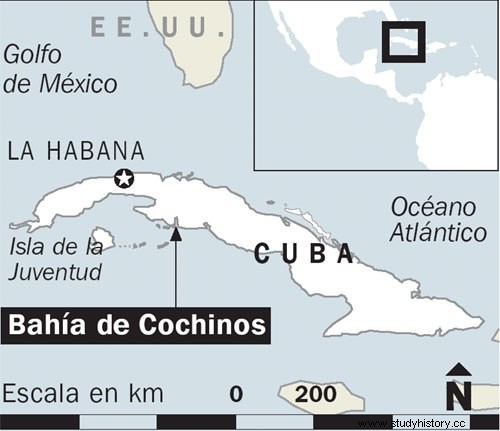
The origins of the invasion
Since its independence from Spain in 1898 and until then, Cuba had been under US influence, but the triumph of the revolution led by Fidel Castro on January 1, 1959 meant a break in this situation. Initially, relations between the new Cuban regime and the United States were not bad, but Castro's policies did not take long to lead to confrontation; the North Americans, accustomed to command in Cuba, saw how their influence disappeared. However, Castro proclaimed the democratic nature of his project, his defense of human rights and freedom of the press.
It is necessary to remember that the revolution that overthrew the dictator Batista was not a socialist revolution, his turn towards socialism occurred a year later. The primary ideology of the guerrilla movement was nationalism inspired by José Martí, although it also had an interest in social equality. However, from the very beginning of the revolution, various measures were approved that strained relations with the United States:the deposition of interim president Manuel Urrutia, more moderate than Castro, the repression of anti-communist revolutionary sectors, for example, that of the revolutionary commander Huber Matos and, above all, the approval of the Agrarian Reform Law that expropriated the agricultural estates of North American companies.
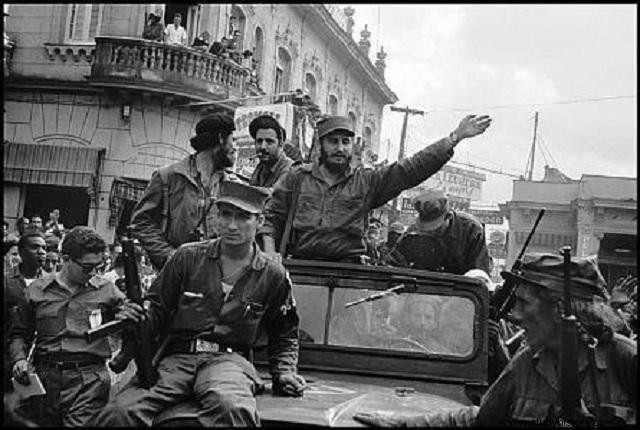
In response, the US government, then led by President Dwight D. Eisenhower (1953-1961), adopted retaliatory measures – it suspended the purchase of sugar (Cuba's main export product), stopped sales of oil from the United States and their allies, etc.–. The intention was to paralyze the Cuban economy. In response to these measures, the Castro government expropriated more US companies, especially oil refineries.
It was then that Fidel Castro turned towards the communist bloc. He was looking for a political and economic solution for the country and for the new regime, harassed by the position of the Americans. The rapprochement began to take place in 1960, symbolically represented by the embrace between Castro and Khrushchev during a UN General Assembly and materially with the arrival in Cuba that same year of Soviet military material, although the express proclamation of the alliance was not carried out. held until April 1961, parallel to the Bay of Pigs invasion.
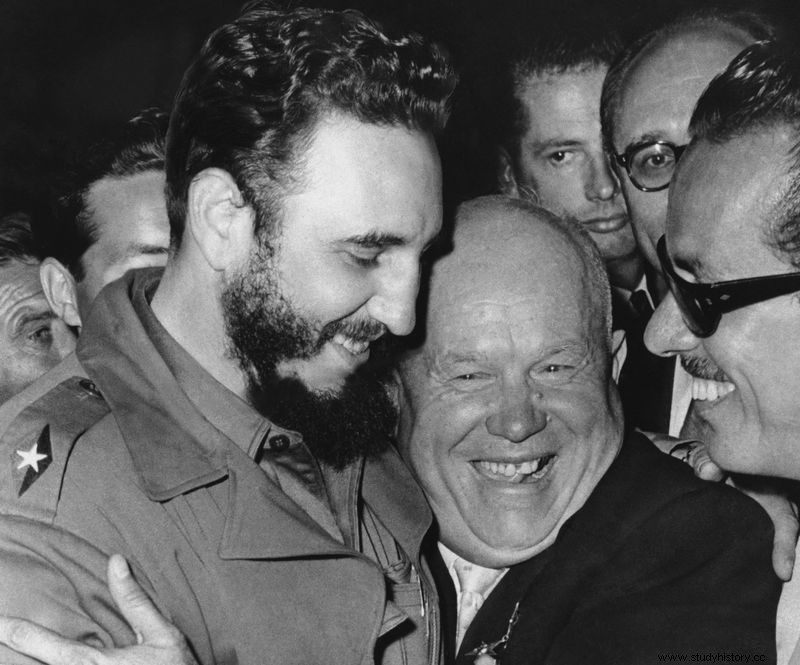
In this way. the disagreement produced by the application of the agrarian reform ended up becoming a total rupture between the United States and Cuba. It would soon go from trying to drown the economy to considering the possibility of overthrowing Castro.
On January 20, 1961, John F. Kennedy became president of the United States. Among D. Eisenhower's legacy was an operation to invade Cuba promoted by the CIA and the US Armed Forces.
The invasion
The planning of the invasion was already designed when Kennedy came to power. The one in charge of planning it had been the CIA following the model used in the overthrow of Jacobo Árbenz in Guatemala (1954), but with Cuban exiles. In this way, Kennedy found that the plan was already underway and the CIA was pressing for it to be carried out now. The president accepted on the condition that it appear to be an exclusively Cuban issue, since he did not want it to hinder his project of political rapprochement with Latin America.
The project consisted of carrying out a landing capable of creating a sustainable beachhead that would give rise to the arrival of a provisional government that would make the situation official and formally request help from the United States. The invasion, according to the CIA, would provoke popular anti-Castro uprisings inside Cuba.
For this, a force of about 1,400 men was formed, of which few were military, organized as a brigade (the 2506). For this reason, they received prior training in Guatemala. They were joined by some aviators who had the mission of piloting the obsolete C-46 and C-54 transport planes and the B-26 bombers. The US government supplied all the necessary weapons to enable the brigade, as well as transport and bombing planes, and ships.
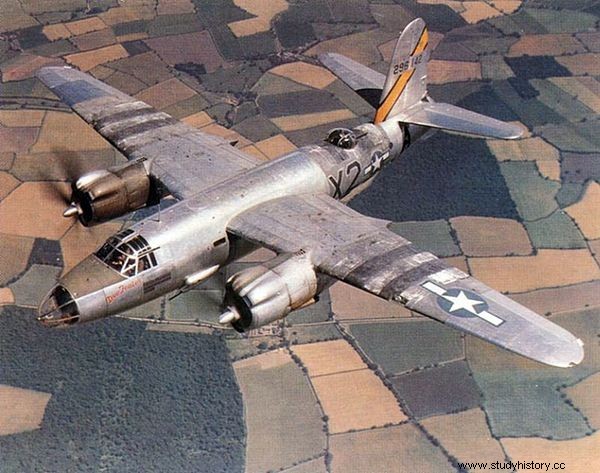
The initial invasion plan, prepared by Eisenhower, was modified by the Kennedy administration with the decrease in the number of planes (from 16 to 8) and the change of the landing site, from near the city of Trinidad to Playa Girón in the Bay of Pigs, also on the south coast. The new location had more disadvantages as it was a swampy area with only one land entrance, the control of which would be key to the success of the operation.
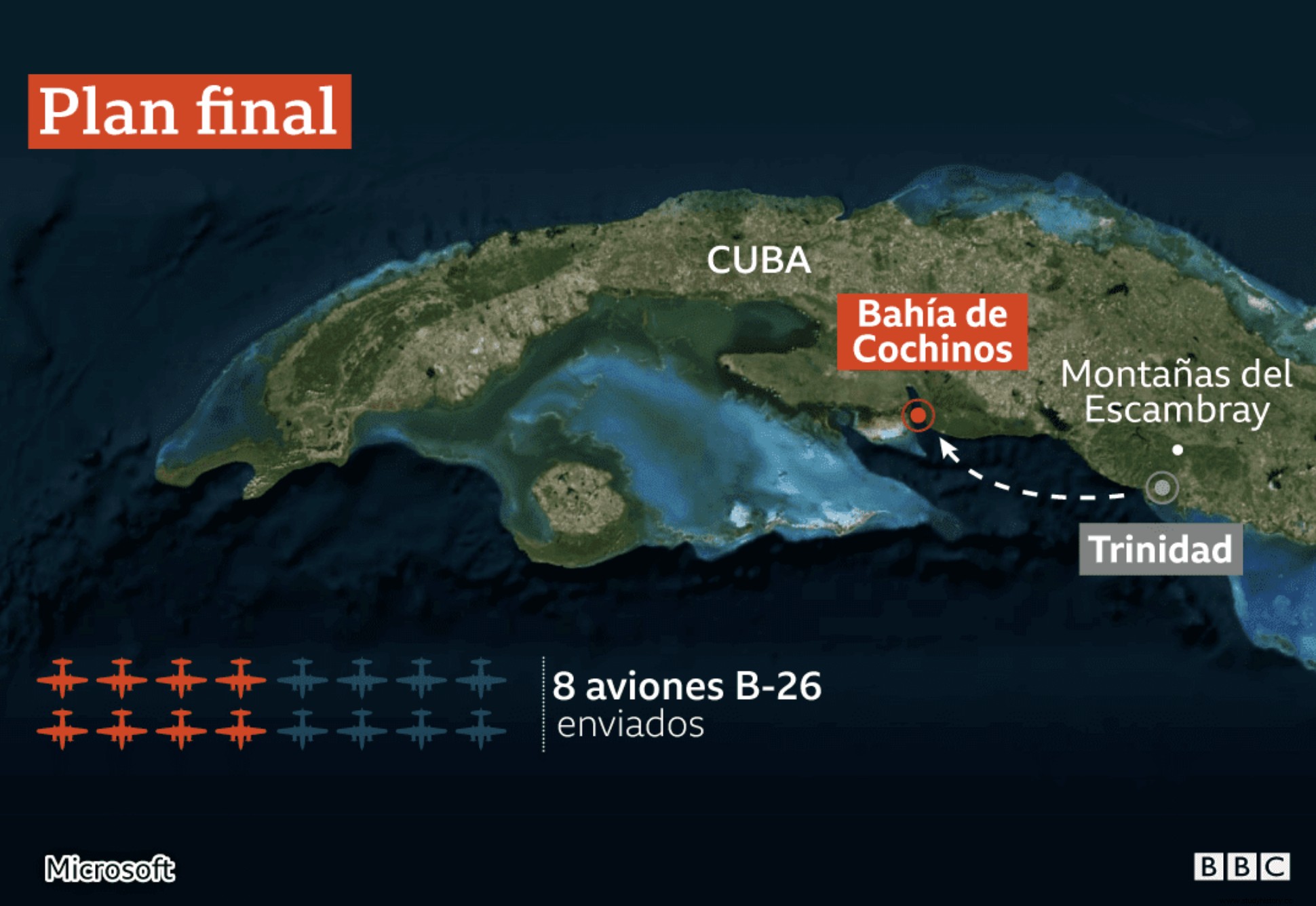
The invading forces left Puerto Cabezas (Nicaragua) from where the planes that participated in the operation also took off. This began in the early hours of April 15, 1961 with the bombing of the main Cuban military airports. The action was only partially successful as the bulk of Castro's aviation remained intact and played an important role in stopping the invasion.
On the 16th, the political police – State Security Directorate of the Cuban Revolution – carried out a major raid to arrest numerous opponents, which neutralized the possible contacts of the counterrevolution inside Cuba.
On April 17, the brigade landed at Playa Girón. Meanwhile, the Cuban militias and army had mobilized some 15,000 men and several dozen tanks, most of them T-34s of Soviet origin. Castro's aviation attacked the ships that participated in the landing, sinking or damaging several of them, which broke the supply chain for the invaders. However, the invaders had been able to establish a beachhead and penetrate about ten kilometers into the interior of the island, taking the towns of Cayo Ramona and San Blas.
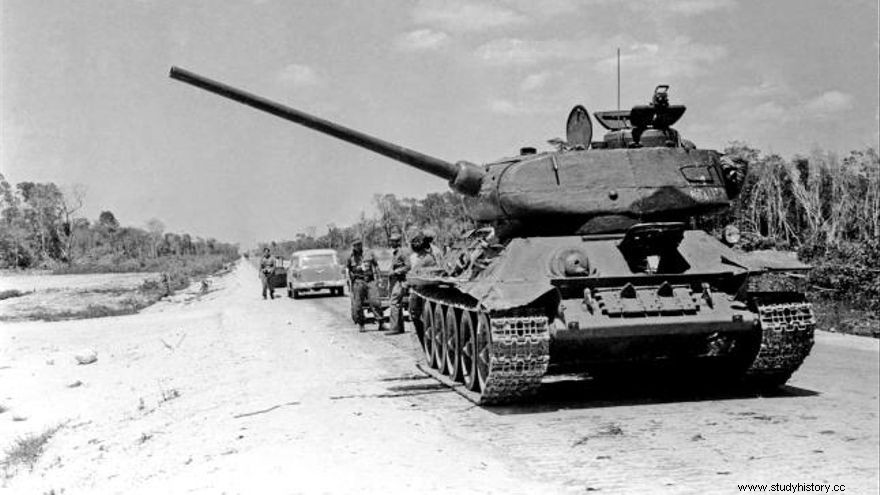
The lack of air support – the United States did not authorize new flights from Nicaragua – and the lack of supplies prevented much further progress. That same night the CIA asked Kennedy to provide air support for the invaders, at the risk of military failure. Kennedy refused, citing the need to maintain a minimum visibility in the conflict.
On April 18, the Cuban counteroffensive began with the massive use of artillery and tanks and the support of aviation. The invading troops had to retreat, demoralized by the support of the civilian population for the Castro forces. They finally concentrated on Playa Girón where they were besieged by government troops. Before nightfall most of the invaders surrendered; the attempted invasion and the project of an alternative government in Cuba had failed.
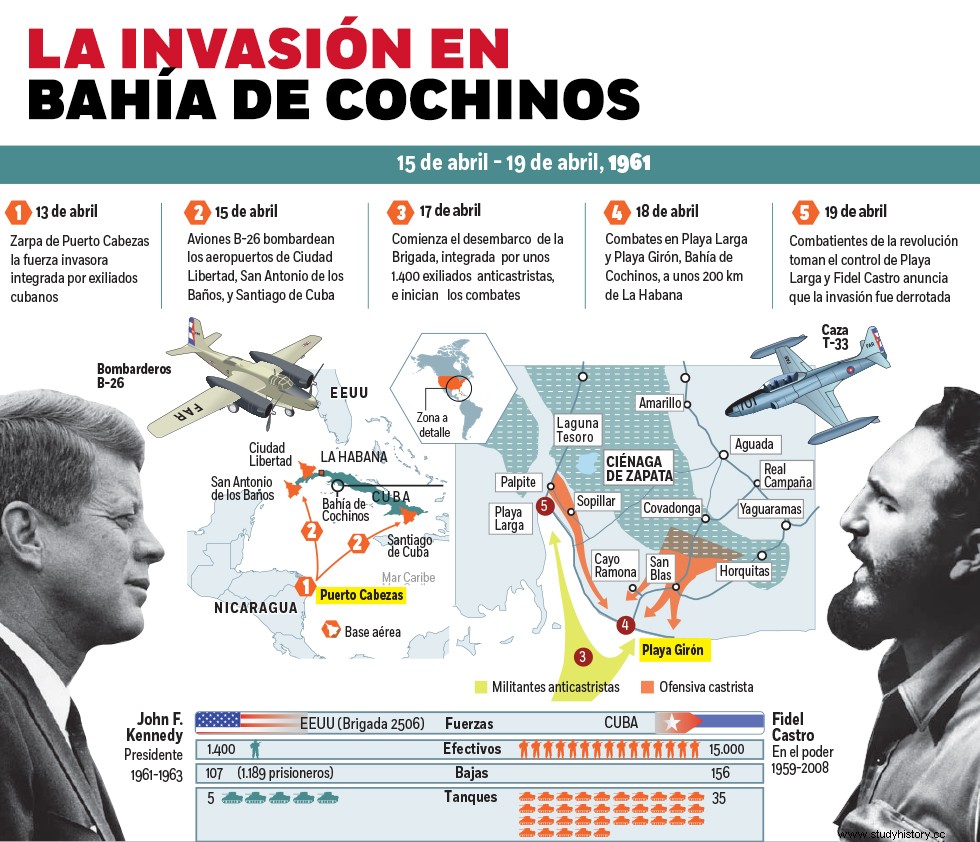
Conclusions.
The Bay of Pigs invasion can be considered a great failure of the North American intelligence services because not only did it not achieve the proposed objective, but it also strengthened Fidel Castro's alliance with the USSR, which implied the alignment of Cuba with the Soviet bloc at the height of the Cold War. The main consequence was the geopolitical change caused by having a communist country less than 150 km away. of North American territory. A circumstance that will trigger, shortly after, the serious missile crisis between the United States and the USSR.
Internally, the victory over the invaders strengthened Fidel Castro's position and increased his prestige as a champion of anti-imperialism. In the same way, it promoted the deepening of the socialist features of the Revolution while the persecution of the opposition increased due to the fear of another possible North American action. The consolidation of the Cuban communist regime also served as an example for other Latin American revolutionary forces that, from then on, could count on close political and economic support.
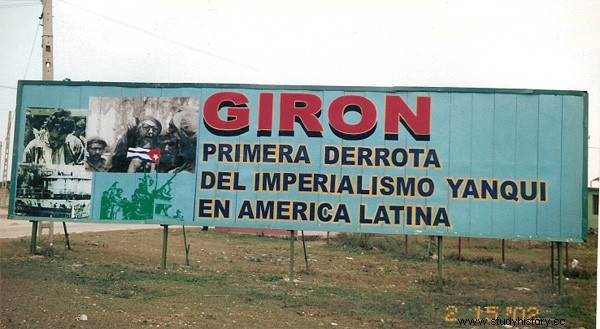
Bibliography.
France 24 in Spanish (April 13, 2021) The Bay of Pigs invasion. 60 years of the U.S. bluff to overthrow Fidel Castro . [Video file]. Youtube. https://www.youtube.com/watch?v=VCUBKvFObkE
Hernandez, C. (2021, April 17). Bay of Pigs, the failure of the CIA that propped up Castro . The vanguard. Retrieved from https://www.lavanguardia.com/historiayvida/historia-contemporanea/20210417/6874093/bahia-cochinos-fracaso-cia-apuntalo-castro.html
Hernández-Echevarría, C. (2021, April 17). The invasion of the Bay of Pigs, the failure of the United States that propped up Fidel Castro in Cuba . Clarion. Retrieved from https://www.clarin.com/mundo/invasion-bahia-cochinos-fracaso-unidos-apuntalo-fidel-castro-cuba_0_9Y1-8n_6l.html
Bay of Pigs invasion. (2021). In Wikipedia, the free encyclopedia . https://es.wikipedia.org/w/index.php?title=Invasi%C3%B3n_de_bah%C3%ADa_de_Cochinos&oldid=134862196
The Cuban Revolution . (2015, May 15). Universal history. Retrieved from https://mihistoriauniversal.com/edad-contemporanea/revolucion-cubana
Monzon, A. (2018, December 31). 60 years of the Cuban Revolution:The island that changed the world . The Independent. Retrieved from https://www.elindependiente.com/tendencias/historia/2018/12/31/cuba-isla-change-world/
Orozco, R. (1994). Castro's Cuba. Current World Notebooks, 40 .
Thomas, H., Vayssière, P., &Orozco, R. (1985). The Cuban revolution. History Notebooks 16, 284 .
